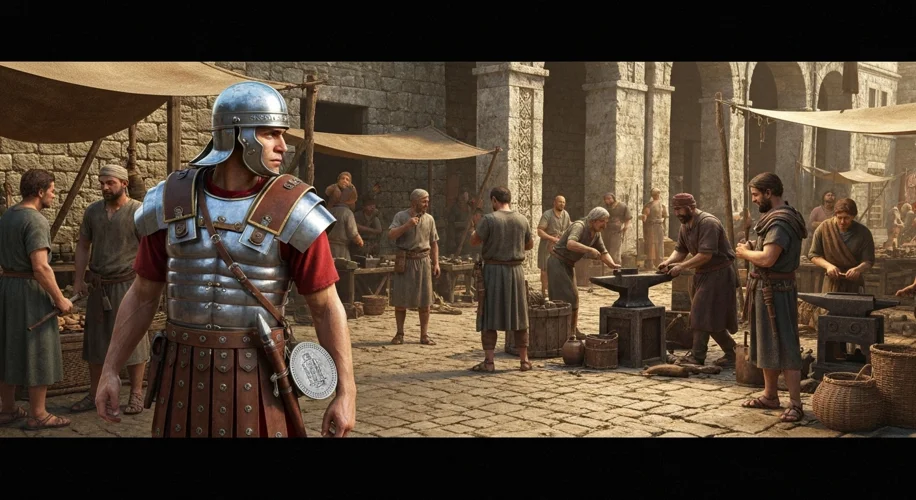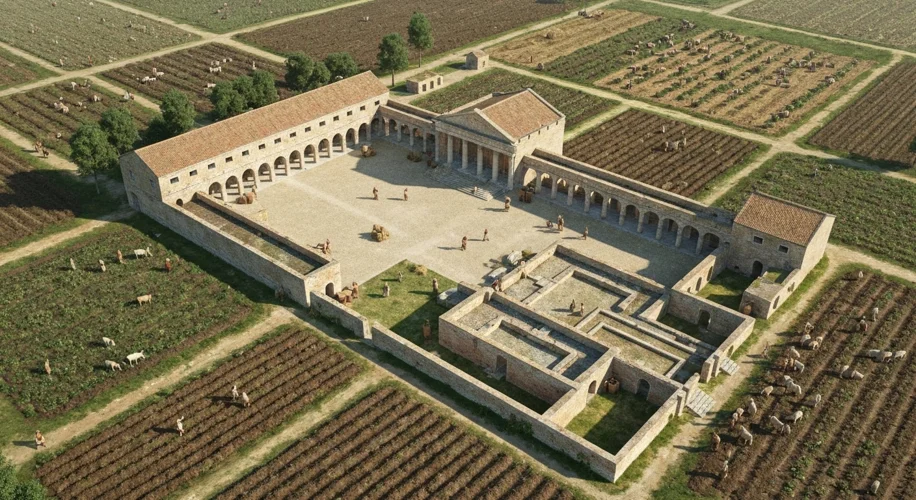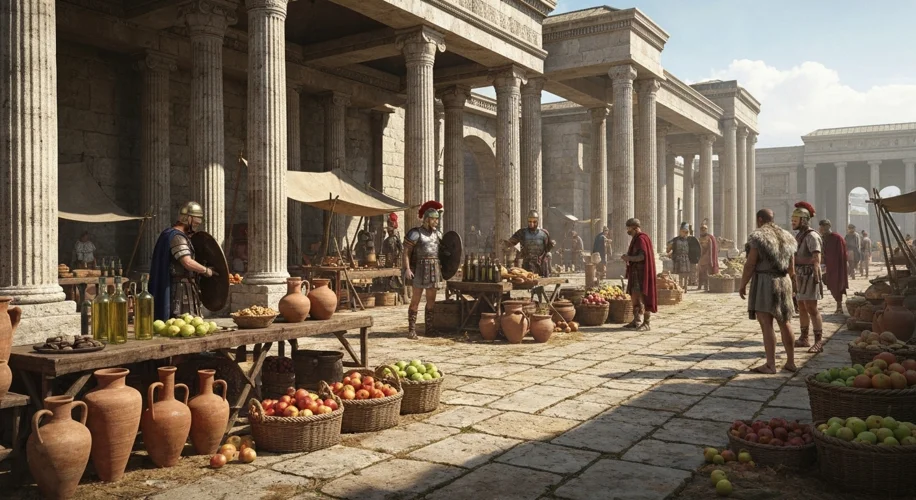The chill wind off the North Sea whipped at the rough wool cloaks of the Iceni warriors, their eyes fixed on the distant shimmer of Roman standards. It was AD 43, and Britannia, a land of misty forests and iron-rich soil, was about to be irrevocably changed. This wasn’t just a military conquest; it was the beginning of an economic revolution, a forceful infusion of Roman pragmatism into a world that had largely operated on barter and tribal custom.
Before the legions marched, Britain’s economy was a mosaic of local traditions. Agriculture formed the bedrock, with communities cultivating grains like barley and wheat, and raising livestock. Trade, while present, was often a localized affair, with goods exchanged through intricate webs of personal relationships and tribal alliances. Think of the famous ‘Bridal Road’ networks, ancient tracks that, even before Rome, facilitated the movement of goods like tin from Cornwall, a precious commodity highly sought after in the wider Mediterranean world. Yet, this was an economy tethered to the seasons and the will of chieftains.
The arrival of the Romans, however, was akin to a seismic shift. Emperor Claudius’s invasion, spearheaded by Aulus Plautius, wasn’t just about subjugating rebellious tribes; it was about integrating Britannia into the vast economic engine of the Roman Empire. Suddenly, the island was no longer an exotic, far-flung periphery but a potential source of wealth and resources.
The most profound change, and perhaps the most tangible, was the introduction and proliferation of Roman currency. For centuries, Britain had relied on a system of exchange that could be as simple as a handshake or as complex as a carefully orchestrated gift exchange. Now, the clinking of silver denarii and the heft of bronze sestertii began to replace the old ways. Roman mints, like the one at Colchester (Camulodunum), churned out coins bearing the emperor’s image, symbols of Roman authority and a standardized medium of exchange. This wasn’t just about convenience; it was about control. The ability to tax in coin, to pay soldiers and officials in standardized currency, and to facilitate large-scale trade all became possible, fundamentally altering the economic landscape.

The integration into the Roman trade network was a double-edged sword. On one hand, Britain’s raw materials became vital to the empire. The tin from Cornwall, the lead, iron, and particularly the grain, flowed southwards, fueling Roman cities and armies. Coastal ports like Richborough (Rutupiae) and Dover (Portus Doveris) transformed from humble settlements into bustling hubs, teeming with ships carrying amphorae of wine, olive oil, and pottery from Gaul and the Mediterranean, and in return, taking away Britain’s bounty.
Agriculture, too, underwent a Roman makeover. The Romans introduced new farming techniques, including the ard (a type of plough), crop rotation, and advanced drainage methods. Large agricultural estates, known as villae, began to appear, particularly in the south and east. These villae, often owned by wealthy Romans or Romanized Britons, were sophisticated operations, producing not just for local consumption but for export. They cultivated crops, raised livestock, and sometimes even specialized in industries like pottery or metalworking.

Consider the output of these villae. Estates in areas like modern-day Somerset and Gloucestershire became significant producers of grain, essential for feeding the troops stationed on Hadrian’s Wall and the burgeoning urban populations in towns like Londinium (London). The demand for these goods, coupled with Roman infrastructure like roads and canals, created a more unified and productive economy within the province.
The impact of this economic transformation was profound. The introduction of a money-based economy facilitated taxation, which in turn funded public works, fortifications, and the administration of justice. It fostered the growth of towns, which acted as centers for trade, administration, and craft production. Craftsmen, from blacksmiths and potters to weavers and stonemasons, found new markets and opportunities, often working within the urban centers that sprang up or expanded under Roman rule.
However, this economic integration also had its costs. The focus on resource extraction for the empire could lead to the exploitation of local populations and resources. The traditional social structures were often undermined as Roman law and administration took precedence. For many ordinary Britons, the imposition of taxes and the demand for goods could be a heavy burden, especially in times of hardship or rebellion.
The legacy of Roman economic policy in Britain is complex. While it brought a degree of sophistication, infrastructure, and integration into a wider world, it also represented a forceful imposition of foreign systems. The roads, the ports, the coins, and the very way goods were produced and exchanged all bear the indelible mark of Roman rule, a testament to how conquest can fundamentally reshape the economic heart of a nation, leaving behind an enduring echo that would resonate for centuries to come.

